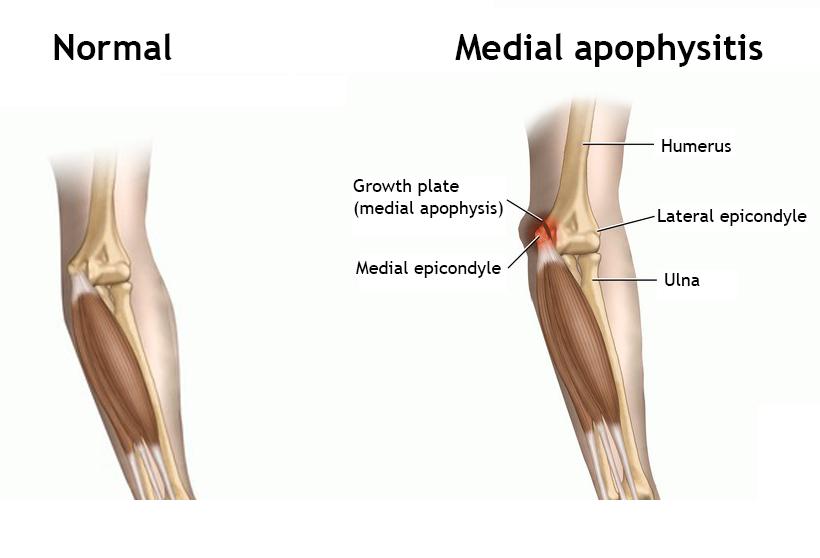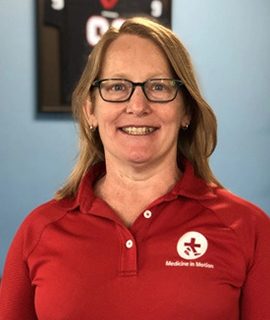Introduction to Little League Elbow
Commonly known as Little League Elbow, medial epicondyle apophysitis is a prevalent condition often seen in young athletes. This overuse injury occurs due to repetitive throwing motions, causing stress and subsequent damage to the growth plates in the elbow. If left untreated, it can lead to severe complications, impacting the child’s ability to perform in sports, and in severe cases, everyday activities.
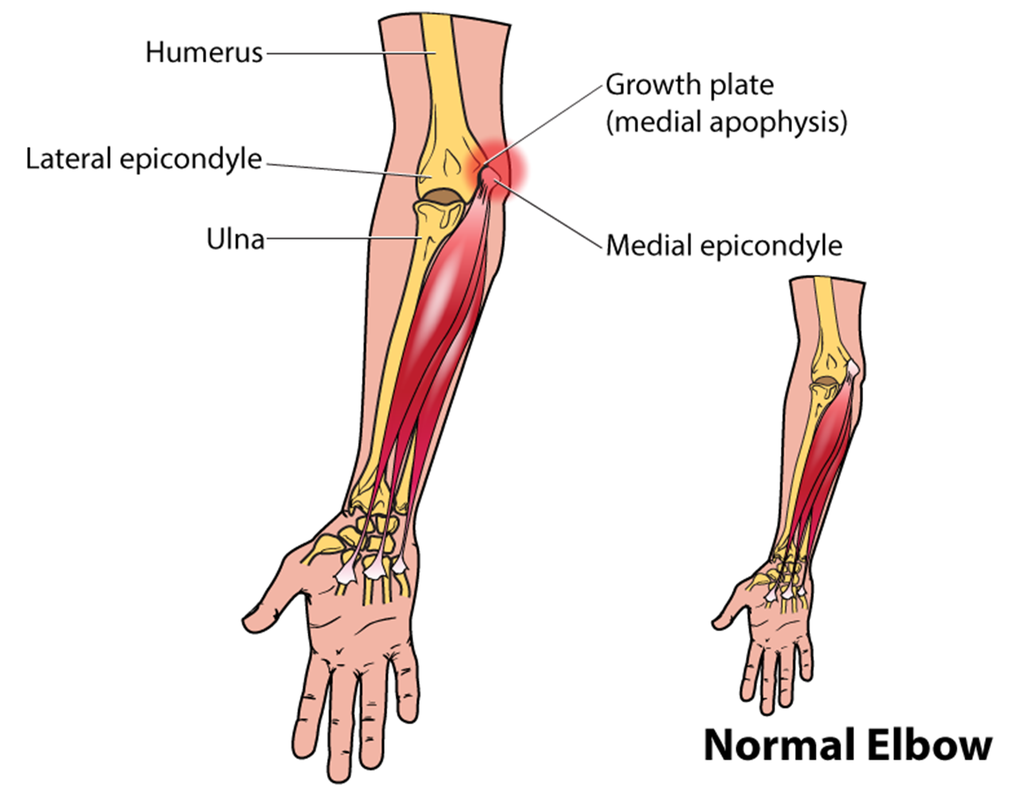
Who Does Little League Elbow Typically Affect?
Primarily, Little League Elbow affects children and adolescents who are engaged in sports that involve repetitive throwing, such as baseball, and particularly pitching. The condition typically occurs in athletes between the ages of 8 and 15, coinciding with a period of rapid growth and development. It is most common in those who have not yet reached skeletal maturity, making the bones more susceptible to injury.
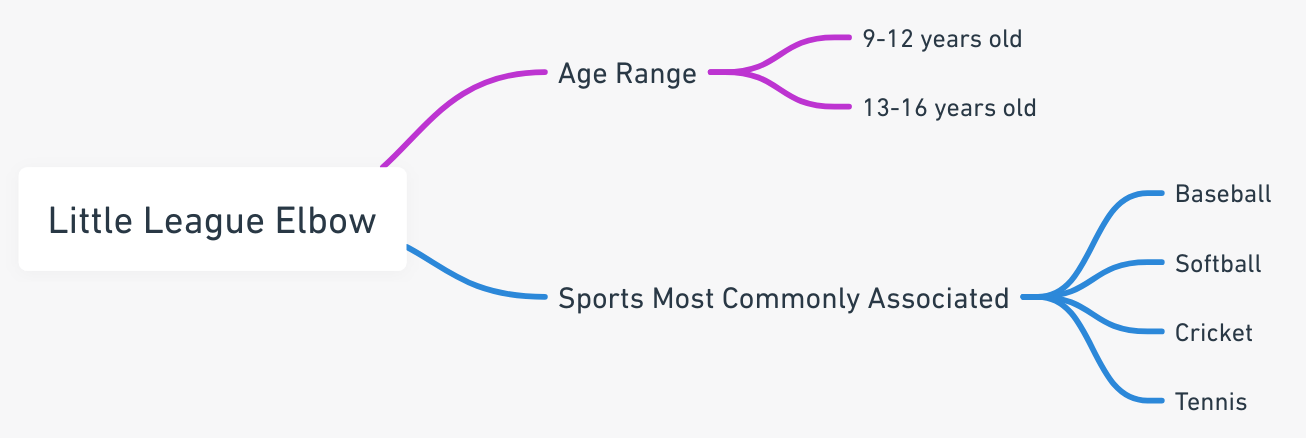
Understanding the Intricate Anatomy of the Elbow
The elbow, seemingly a simple hinge joint, is actually a complex structure composed of three key bones: the humerus (upper arm bone), the radius and the ulna (lower arm bones). These bones work in harmony to perform the various functions of the elbow, from bending and extending to rotating the forearm. (Source)
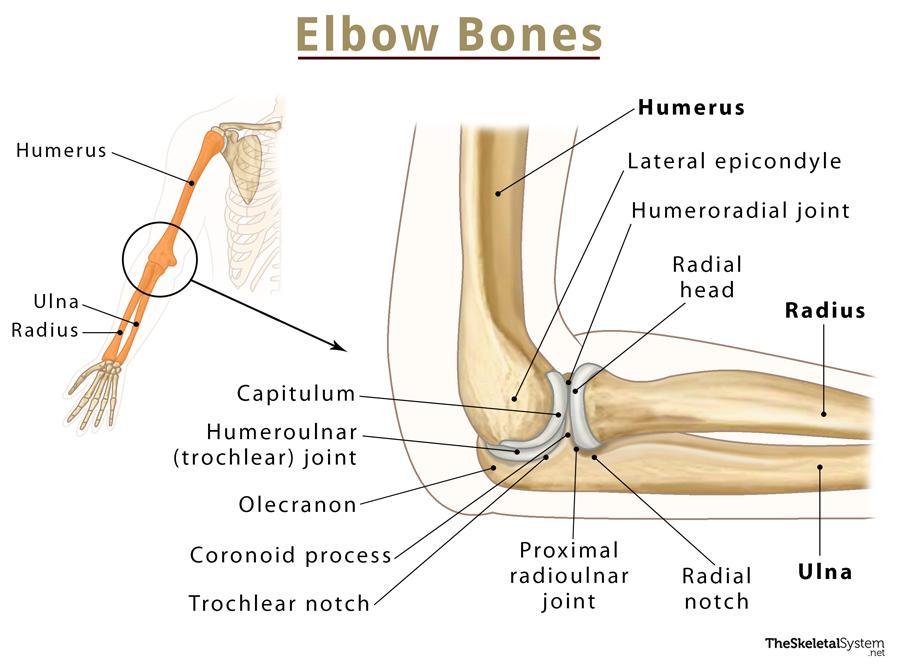
Bones, Ligaments, and Tendons: The Essential Building Blocks
These bones are held together by numerous ligaments, including the lateral collateral ligament and the medial collateral ligament, providing stability to the elbow joint. Four main tendons connect the muscles to the bones, allowing for smooth and coordinated movements. The largest tendon, the biceps tendon, plays a crucial role in the flexing of the elbow. (Source)
Understanding the elbow’s anatomy can help you comprehend the intricacies of its function, and why it’s so prone to injuries.
Causes and Risk Factors of Little League Elbow
Little League Elbow, technically known as medial epicondylitis, is a common condition among children who engage in sports involving repetitive throwing motions, such as baseball or softball. This condition is caused by the repeated stress exerted on the elbow joint, leading to inflammation, pain, and in severe cases, growth plate damage.

Several factors increase the risk of developing this condition.
Age is a significant factor, with children between the ages of 9-12 most susceptible, due to their still-developing bones and muscles. Gender also plays a role, with boys more likely to develop this condition than girls. Additionally, certain sports increase the risk, particularly baseball and softball, due to the repetitive and high-impact throwing required.
Understanding these risk factors can help in prevention and early detection of Little League Elbow, ensuring a safe and healthy sporting experience for children.
Signs and Symptoms of Little League Elbow
Little League Elbow, also known as Medial Epicondyle Apophysitis, is a common injury among young athletes, particularly those who play baseball or other throwing sports. It’s vital to recognize the symptoms early to prevent further damage and ensure a swift recovery.
The most common symptoms include:
- Pain on the inside of the elbow
- Swelling in the elbow area
- Reduced range of motion
- Feeling of instability in the elbow
- Locking sensation in the joint
Differentiating Little League Elbow from Other Injuries
Distinguishing Little League Elbow can be challenging due to similarities with other elbow injuries. The key differentiation lies in the specific area of pain and the age of the patient. Little League Elbow typically affects athletes between ages 8-15, and pain is concentrated on the inner elbow. More information on differentiating sports injuries can be found at Mayo Clinic.
Consider adding a chart comparing Little League Elbow with other common elbow injuries.
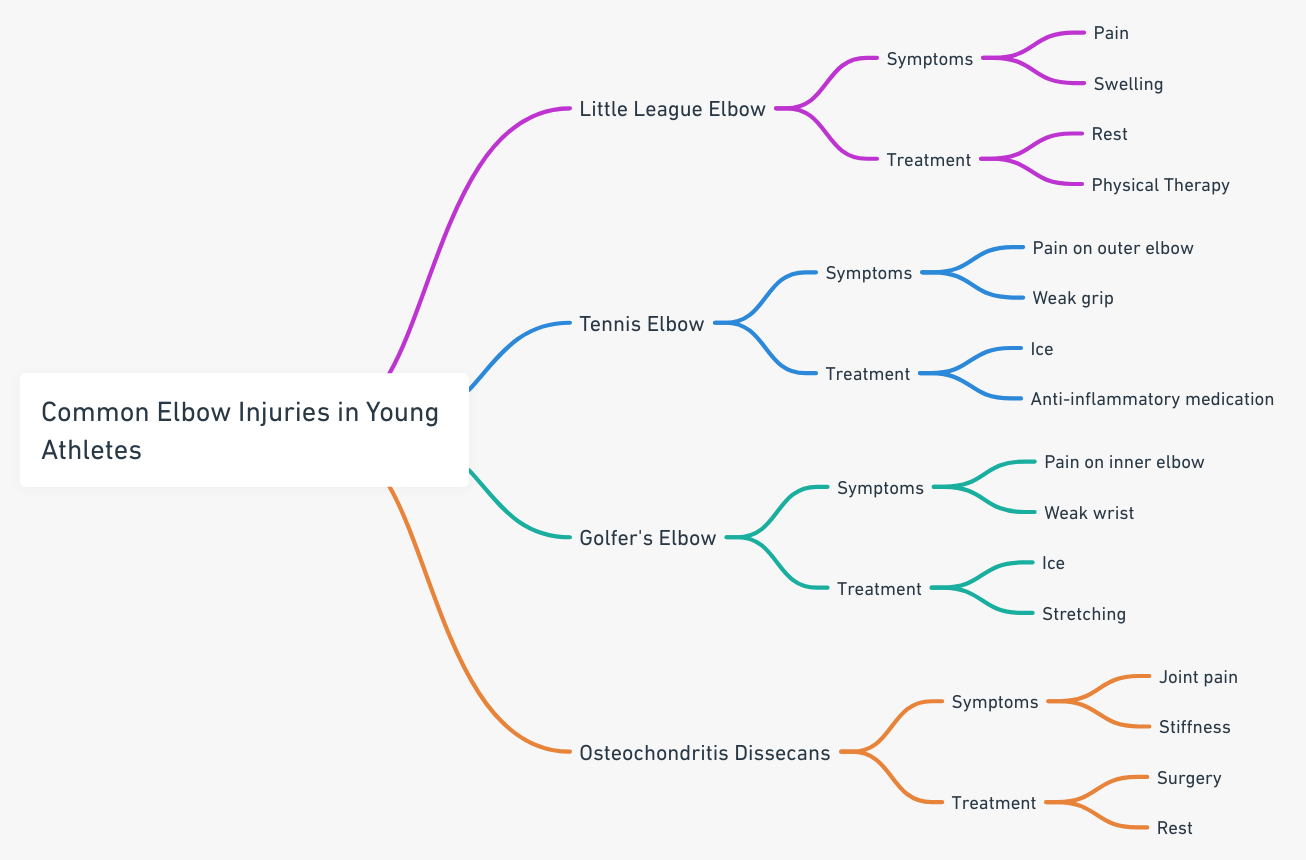
Understanding the Diagnosis Process
The diagnosis process involves a systematic approach to identify the root cause of a patient’s symptoms. To diagnose Little League Elbow, a common condition among young baseball players, doctors employ a series of steps.
Physical Examinations
Firstly, physical examinations are conducted where the doctor checks for any signs of swelling, redness, or tenderness in the elbow. The doctor will also evaluate the range of motion and any pain associated with movement.
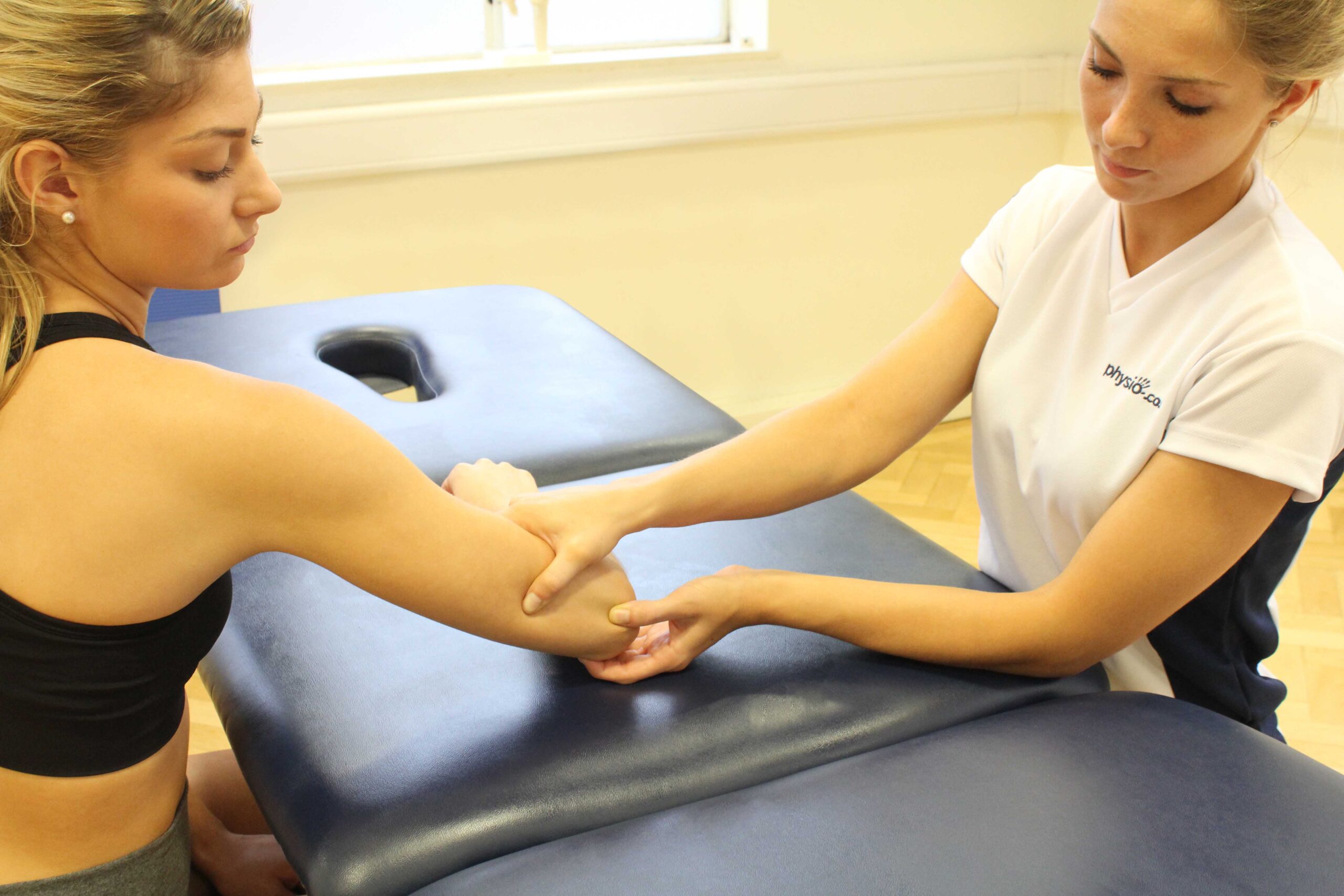
Imaging Tests
Following the physical examination, imaging tests like X-rays and MRI scans are conducted. These tests provide detailed images of the elbow’s internal structures and help in identifying any abnormalities or damages.
Importance of Accurate Diagnosis
An accurate diagnosis is imperative for developing a successful treatment plan. Misdiagnosis or delayed diagnosis could lead to long-term damage or complete cessation of the young athlete’s budding career. Therefore, understanding the diagnosis process and its importance is crucial for anyone involved in youth sports.
Treatment Options for Little League Elbow
Little League Elbow, a common condition among young baseball players, is a result of repetitive throwing motions causing stress and damage to the growth plates in the elbow. Fortunately, there are several effective treatment options available.
Conservative Treatments
Initially, the best approach is often conservative treatment. This includes rest to allow the affected area to heal, ice to reduce swelling, and over-the-counter pain medications for relief.
Physical Therapy
In addition to rest, physical therapy can be extremely beneficial. A physical therapist can recommend specific exercises to strengthen the muscles and enhance flexibility, thus reducing the risk of further injury.
Surgery
If conservative treatments and physical therapy are not effective, surgery may be considered. This usually involves removing loose bone fragments, repairing damaged ligaments, and possibly adjusting the growth plate.
Prevention Strategies for Little League Elbow
Preventing Little League Elbow hinges on three core strategies: mastering proper pitching technique, ensuring adequate rest and controlled pitch counts, and incorporating cross-training and off-season conditioning.
The Importance of Proper Pitching Technique
Proper pitching mechanics reduce the strain on the elbow, lessening the risk of injury. Enlist the help of a coach or professional to learn and maintain correct form.
Role of Rest and Limiting Pitch Counts
Limiting pitch counts and ensuring sufficient rest periods between games is crucial in preventing overuse injuries. The American Sports Medicine Institute provides recommendations for pitch counts and rest periods based on age.
Benefits of Cross-Training and Off-Season Conditioning
Cross-training and conditioning exercises in the off-season can build strength and flexibility, reducing the risk of elbow injuries. Activities like swimming or cycling can be effective.
Long-term Prognosis and Impact of Little League Elbow
If Little League Elbow is left untreated, it can result in serious complications. These may include growth plate fractures, deformity of the elbow joint, and even permanent damage that could limit arm function.
The recovery timeline largely depends on the severity of the condition and the individual’s response to treatment. Generally, it may take several weeks to a few months of resting the arm and following a physical therapy program.
Impact on Sports Participation and Quality of Life
With proper treatment and rehabilitation, most kids can return to their sports activities. However, they may need to modify their throwing technique or limit their pitch count. Preventive measures are essential to avoid re-injury.
Left untreated, Little League Elbow can significantly impact the quality of life, inhibiting not only sports participation but also everyday activities. Early detection and treatment are key to a positive prognosis.
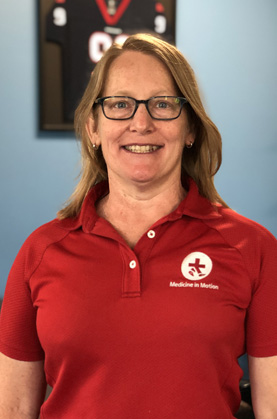
Dr. Martha Pyron is a recognized sports medicine physician and the founder of Medicine in Motion, an Austin-based practice specializing in comprehensive medical care for active individuals and athletes. An active contributor to her field, she uses her extensive experience as a former collegiate athlete to aid her patients and develop innovative care strategies. Beyond her clinical practice, Dr. Pyron is known for her involvement in the local athletic community and her commitment to promoting health and fitness.


